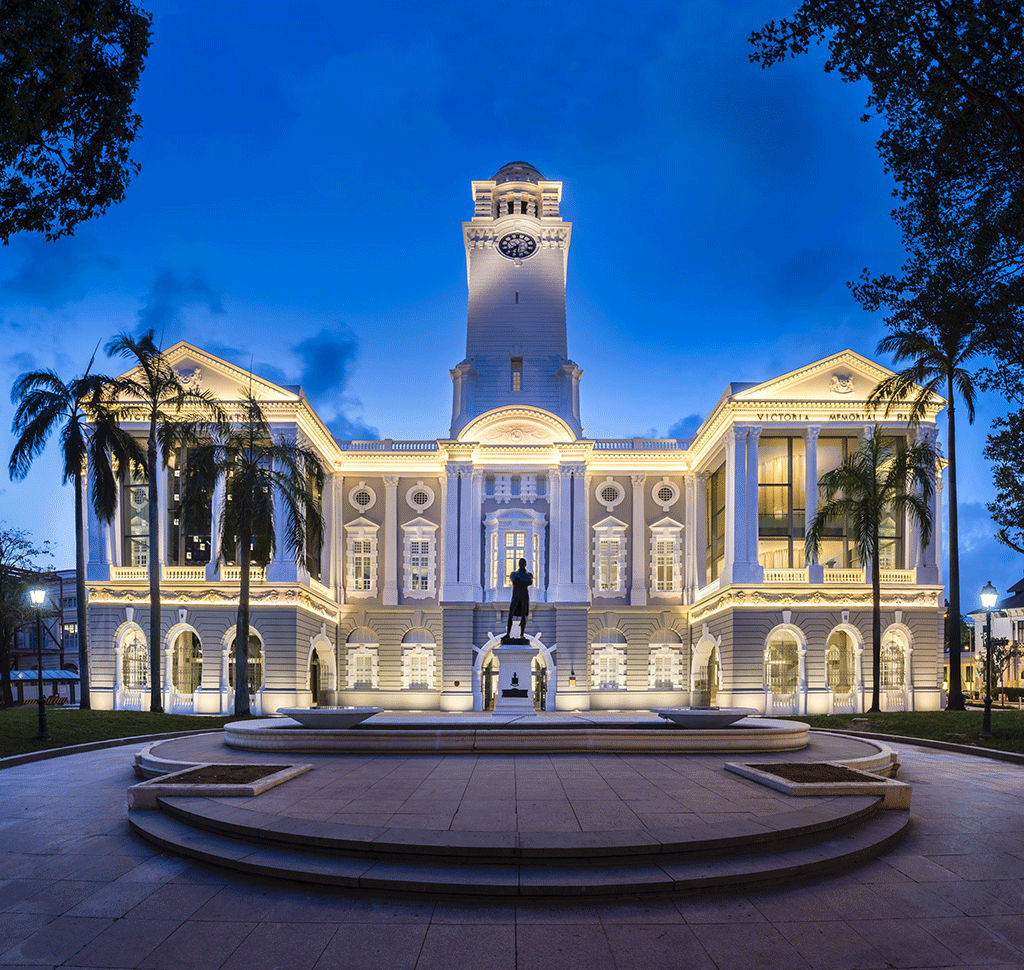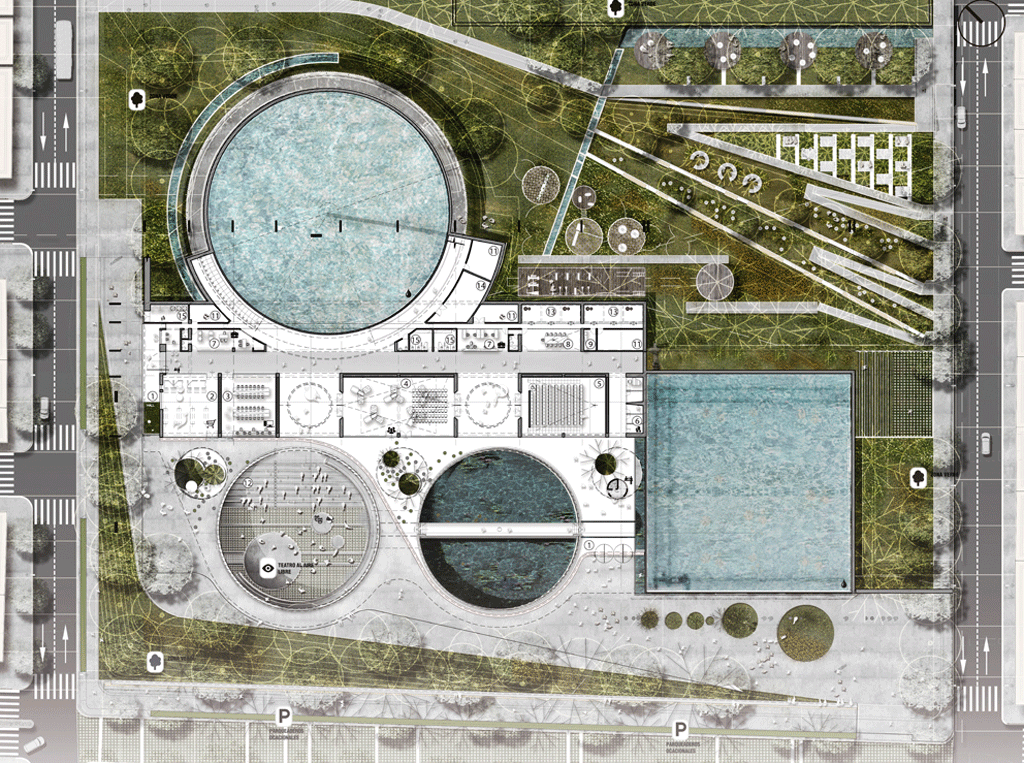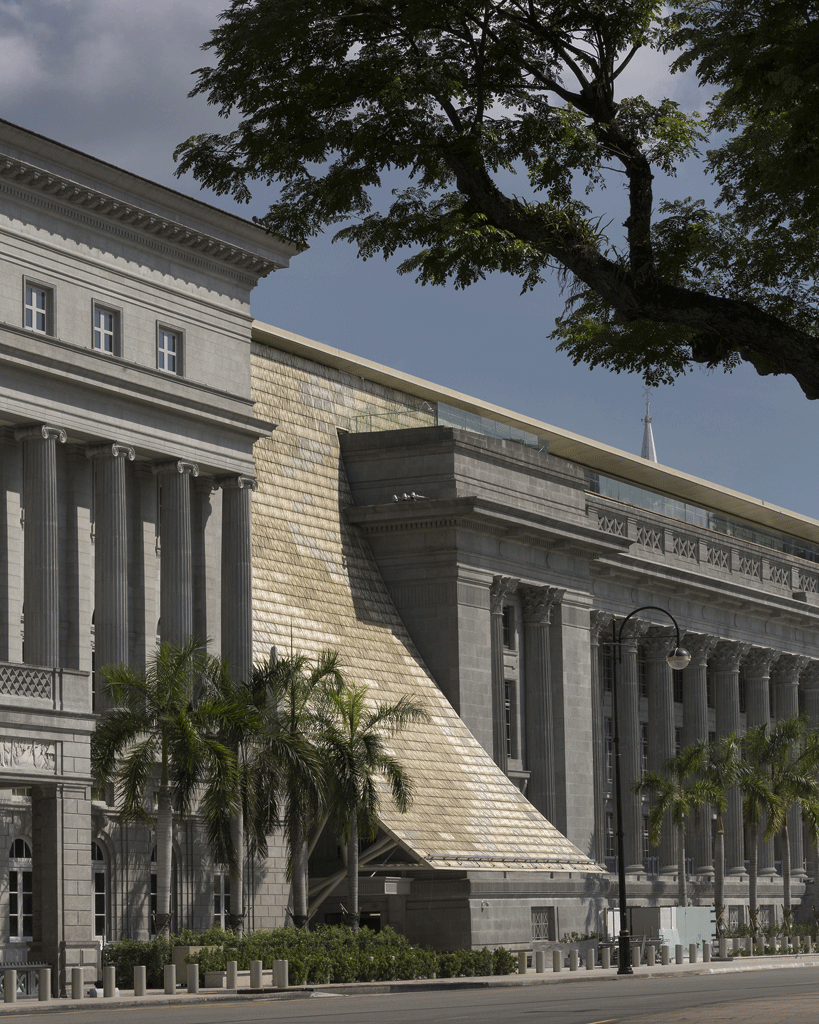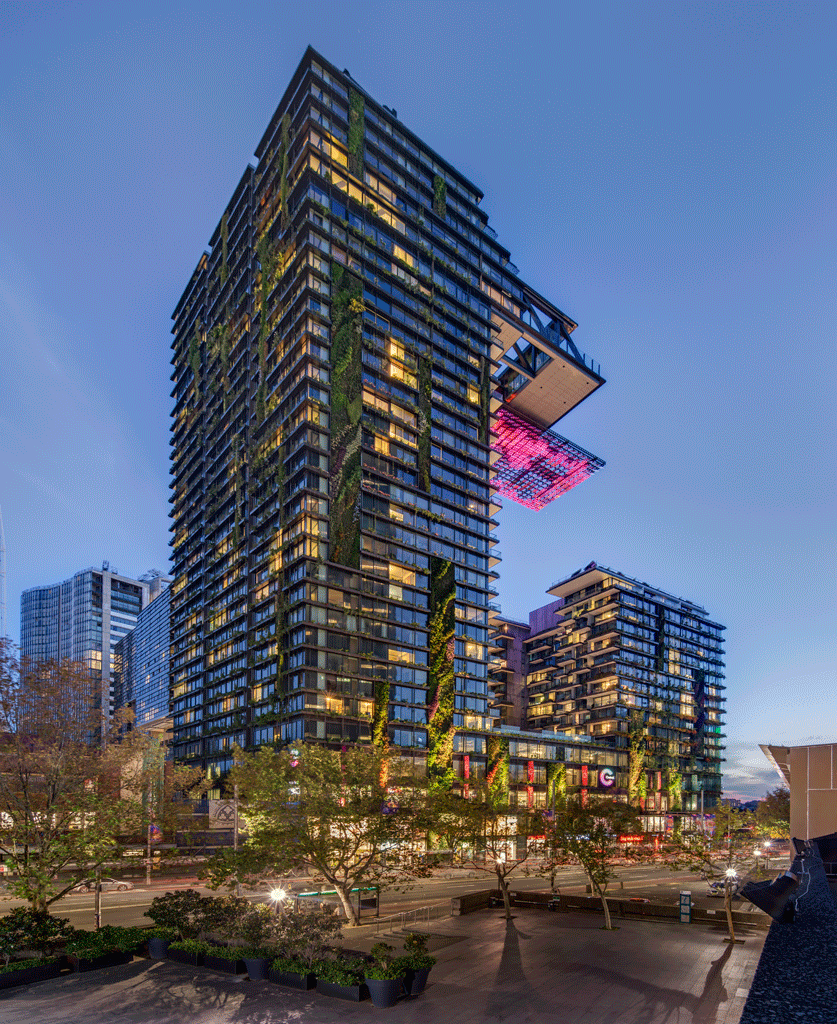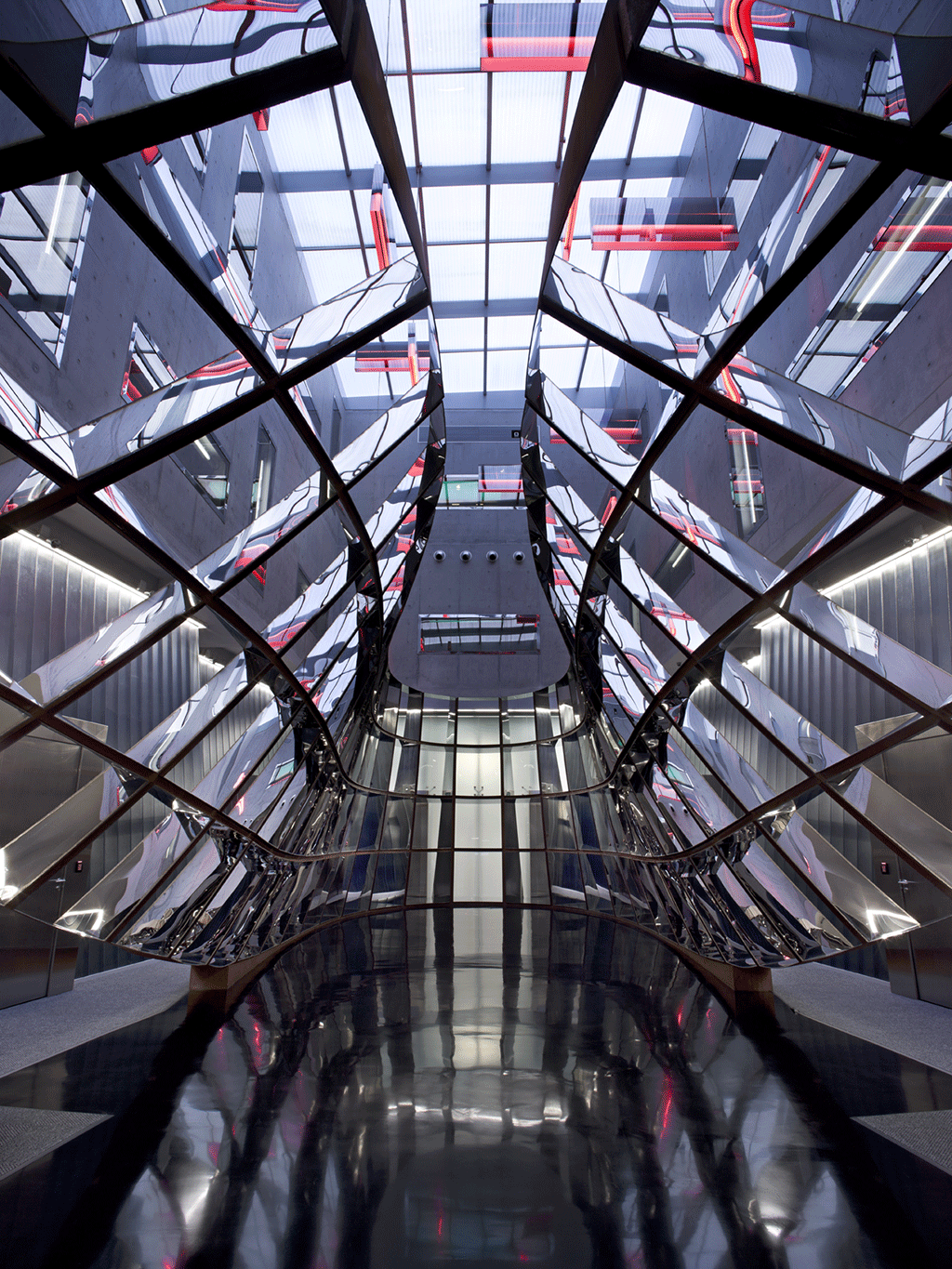« Parfois, l’architecture la plus influente n’existe qu’en dessin »
Edwin Heathcote, critique d’architecture pour le Financial Times, dresse pour AA un portrait parallèle de deux architectes visionnaires récemment disparus : le britannique Ken Adam et le français Claude Parent. Le premier s’est fait connaitre en concevant les décors des bunkers des films « James Bond », le second s’est notamment inspiré des abris anti-bombes pour son architecture « oblique ». Un article à lire dans sa version originale.
The death this year in close succession of Claude Parent and Ken Adam robbed architecture of two of its great modernist visionaries. One was designing for the real world, the other for the world of blockbuster fantasy, yet in a way both were working towards an architectural imaginary. And both have left an indelible mark on how we continue to imagine the future.
Adam spent his childhood in the febrile atmosphere of 1920s Weimar Berlin. He grew up in a cultured, prosperous Jewish family, his father a one-time cavalry officer in the Prussian army and subsequently owner of a department store. He had commissioned Mies van der Rohe to build a new store but the Nazis’ consolidation of power led the Adams to leave Berlin for Britain. The event that sparked the decision was, according to Adam, him seeing the flames rising from the Reichstag in 1933.
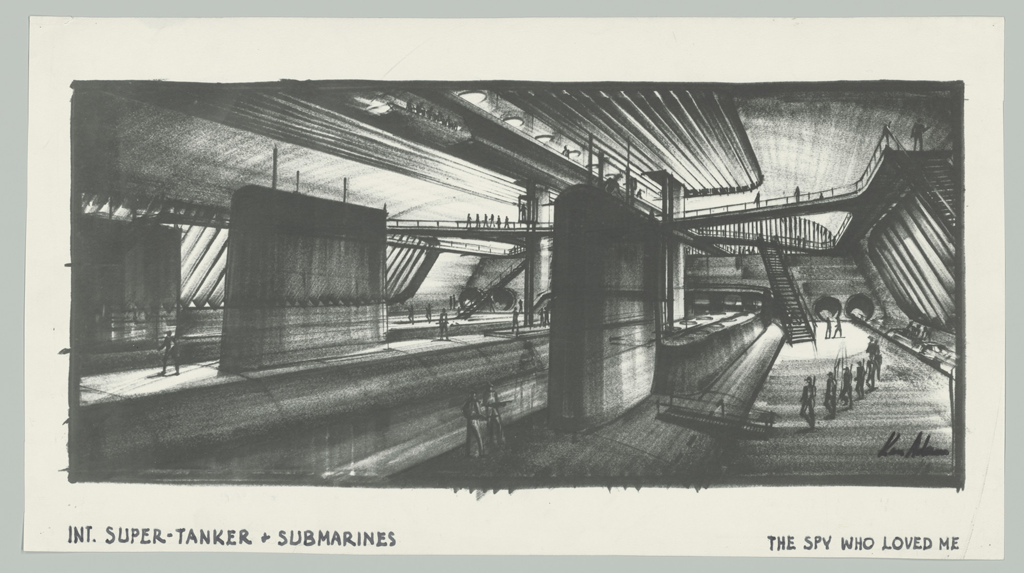
In Britain, Adam was encouraged by an encounter with Hungarian emigre director Victor Korda to study architecture at the Bartlett. He did but, at the outbreak of war he found himself in the Pioneer Division, a unit of foreign-born engineers working with the British army. His first job was to design bomb alters and bunkers.
He went on to join the RAF as a fighter pilot, flying the new Typhoons and firing the first air-to-ground-missiles at columns of German tanks.
After the war Adam went straight into the movies, first as a draftsman and then as a production designer. He made his name on the Bond films designing those incredible villains’ lairs and rocket bunkers which have become part of the collective imagination. Could this RAF fighter pilot have been influenced by what he witnessed in the war? By the combination of High Tech weaponry and the terrors he witnessed when he was one of the first officers in to Belsen? By the concrete V1 bunkers in France? How could he not have been?
His most memorable sets were all about war – missile and rocket launching bunkers and, of course the War Room from 1964’s ‘Dr Strangelove’ (‘Gentlemen, you can’t fight in here, this is the war room’). His interior’s were dark, with craggy rock walls and dramatic lighting. They evoked the expressionism of his childhood, the dark, jagged, shadowed spaces of Nosferatu, Caligari or Metropolis. Adam’s drawings were a cocktail of that shadowy, filmic world and a seductive Mid-Century cool, all sloping ceilings, conversation pits and shag-pile carpets to go with the white lap cats. The sets shaped our ideas about evil empires – these were, of course, ciphers for communism as well as about design – often these were peoples’ first encounters with the high end of modernism.
Claude Parent meanwhile was trying to design villains’ lairs and extravagant new worlds for the real world. Largely he was unsuccessful, the world wasn’t ready for his genius. In a way, Parent was the caricature of the misunderstood avant grade architect who ends up doing visionary drawings as no-one could live with the buildings. But in other ways he was among the most radical and fascinating of designers whose proposals of an ‘Oblique Architecture’ in which level floors would be a thing of the past and surfaces would slope to become challenging, to become furniture and to offer new ways of living, was one of the most remarkable and influential of modernist ideas.

Adam started building bomb shelters and bunkers – Parent was instead inspired by them. Together with Paul Virilio he explored the North Atlantic concrete bunkers built by the Nazis, many of which had subsided and been half-filled with sand. They became intrigued by how the subsidence played with conventional notions of how a building should feel and how the senses became overwhelmed by mass, shadow and texture as well as space. These were spaces of the memory of the dark side of modernism and they would become every bit as influential as Adam’s settings for mad dictators. The strange constructions of the war, the darkness, shadows and terror that cam with it were pivotal in the development of both designers.
For Adam they became lairs and secret bases, Parent though translated his ideas into everything from churches to supermarkets and nuclear power stations. He built houses in which walls melded into floors, jagged, expressionist spaces straight form Dr Caligari’s Cabinet, he refused to be bound by constructional conventions.
The big names of contemporary architecture payed homage to these remarkable visionaries. Rem Koolhaas commissioned a Parent space for his 2014 Venice Biennale, Jean Nouvel dedicated his Paris Philharmonie to Parent – who had been a mentor to the younger architect. And, in a poetic twist, Norman Foster revealed that Adam’s designs had been pivotal in his reimagining of the Reichstag in its rebuilding. It is a wonderful cycle; the burning building which prompts a teenager to flee his home city is, in turn, reimagined and rebuilt by an English architect, who was himself in the RAF and ever since a keen pilot, inspired by Adam’s visions of futuristic technology in the Bond films. Sometimes, the most influential architecture exists only on the screen or in drawings. Buildings are only part of the story.
Edwin Heathcote

